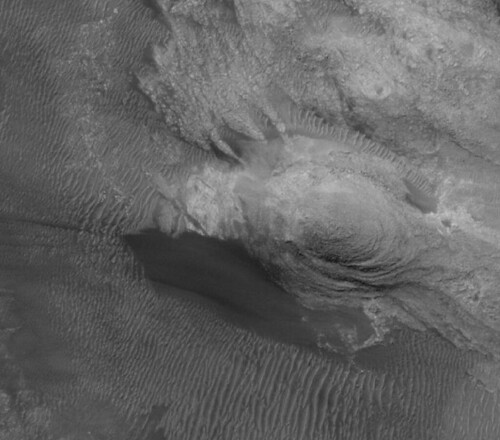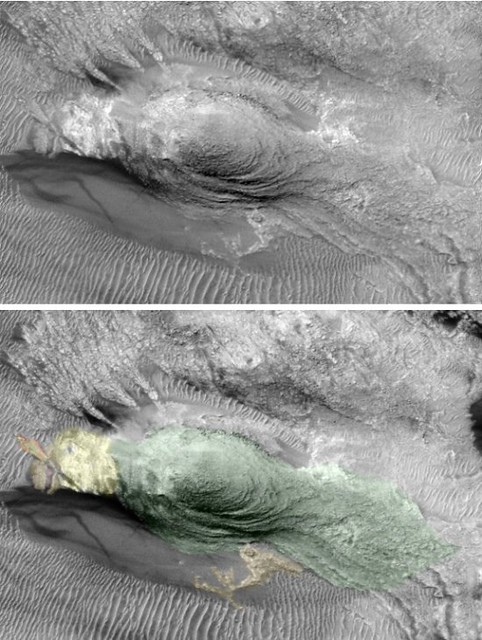Is This a Parrot on Mars?
 Wednesday, April 11, 2012 at 14:59
Wednesday, April 11, 2012 at 14:59  Do you see a parrot in this picture?
Do you see a parrot in this picture?
How about now?
A new paper claims this is not a Rorschach test for the extraterrestrially challenged, but an anatomically correct, three-dimensional rendering of a parrot on Mars that is too accurate for chance.
So concludes an independent team of two geologists, three veterinarians and a sculptor -- who spent six years hashing out the details of three images from NASA's now-defunct Mars Global Surveyor spacecraft taken between April 2000 and December 2005.
What is generically described by NASA as "repeat layered material and rectilinear ridges" in its description of Mars Global Surveyor photo No. S13/01480, actually includes an "avian-shaped formation that exhibits a unique set of proportional features," says independent researchers Michael Dale, George Haas, James Miller, William Saunders and veterinarians A.J. Cole, Joseph Friedlander and Susan Orosz, in a paper in the Journal of Scientific Exploration.
The structure was found in early 2002 by independent Mars researcher Wilmer Faust who was reviewing sets of publicly released images taken by NASA's Mars Global Surveyor. He identified specific avian features, including an eye, beak, tongue, leg, clawed foot and wing, as well as what he called tail feathers. He brought his research to the Cydonia Institute, which probes what may be non-naturally occurring structures on Mars. Work on the parrot formation was under way when Faust died in 2005.
NASA since released two more pictures of the area under different lighting conditions and from different angles.
The researchers say there are "no known geologic mechanisms that are capable of creating the anatomical accuracies presented in this formation," and that the "natural creation of a formation with 17 points of anatomical correctness seems to go well beyond the probability of chance."
"I know art when I see it," Haas, the sculptor in the group, told Discovery News.
Despite my nice chat with Mr. Haas, who is working on a book on the subject, I'm not convinced. We do agree on one point however: The best way to resolve the matter one way or another is to go there.
Oh, and in case you're wondering, NASA did image the site with the follow-on Mars Reconnaissance Orbiter, but it didn't include high-resolution details. Here's that view:
 Images: The south-facing slope of the Argrye Basin, located near in the southern hemisphere of Mars, includes a formation that is about 1.5 miles long and about 191 yards high. Bottom shot, taken by Mars Reconnaissance Orbiter, shows the area in context. Credit: NASA. Contrast enhancement credit: George Hass. Colorization credit: William Saunders.
Images: The south-facing slope of the Argrye Basin, located near in the southern hemisphere of Mars, includes a formation that is about 1.5 miles long and about 191 yards high. Bottom shot, taken by Mars Reconnaissance Orbiter, shows the area in context. Credit: NASA. Contrast enhancement credit: George Hass. Colorization credit: William Saunders.


